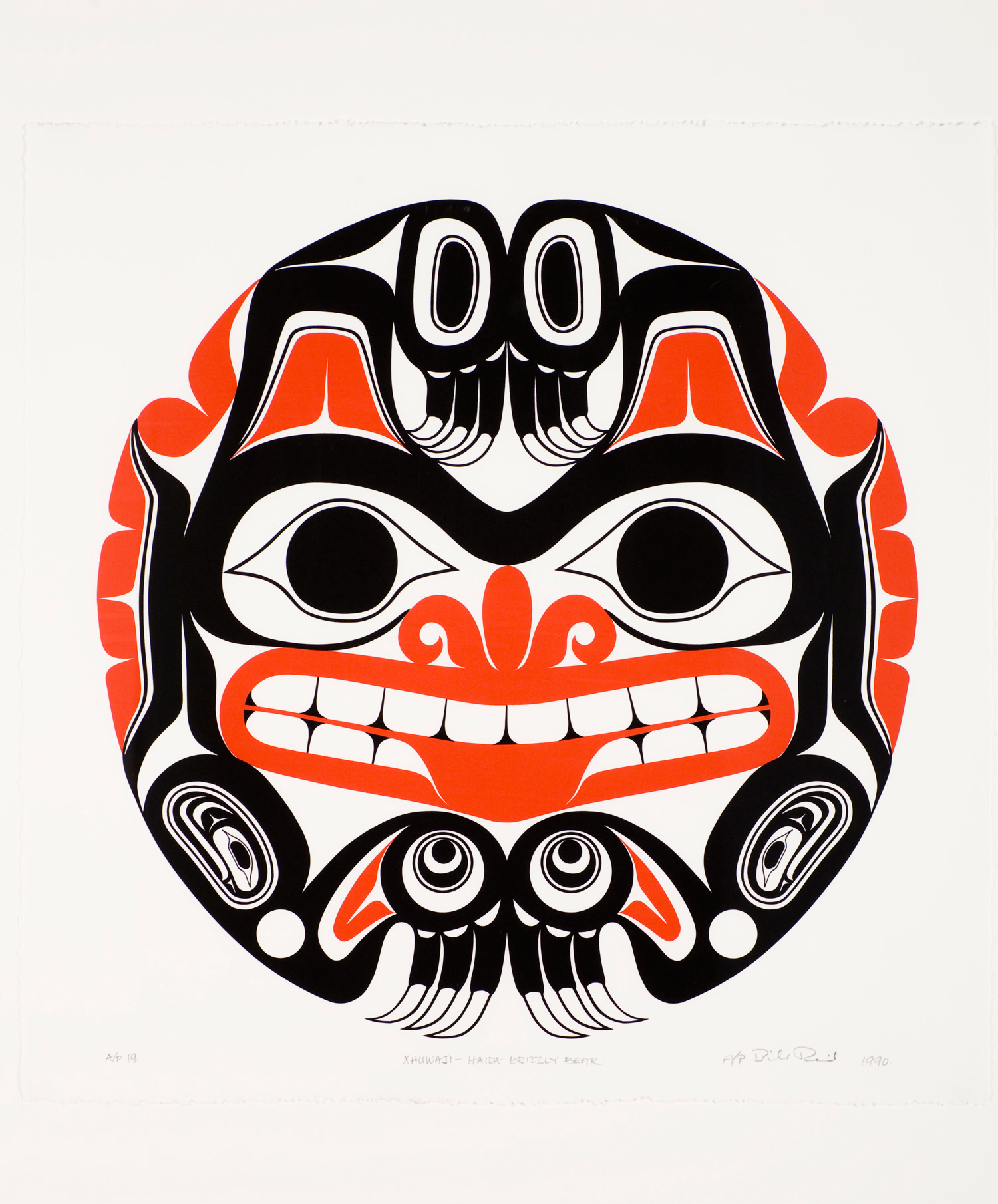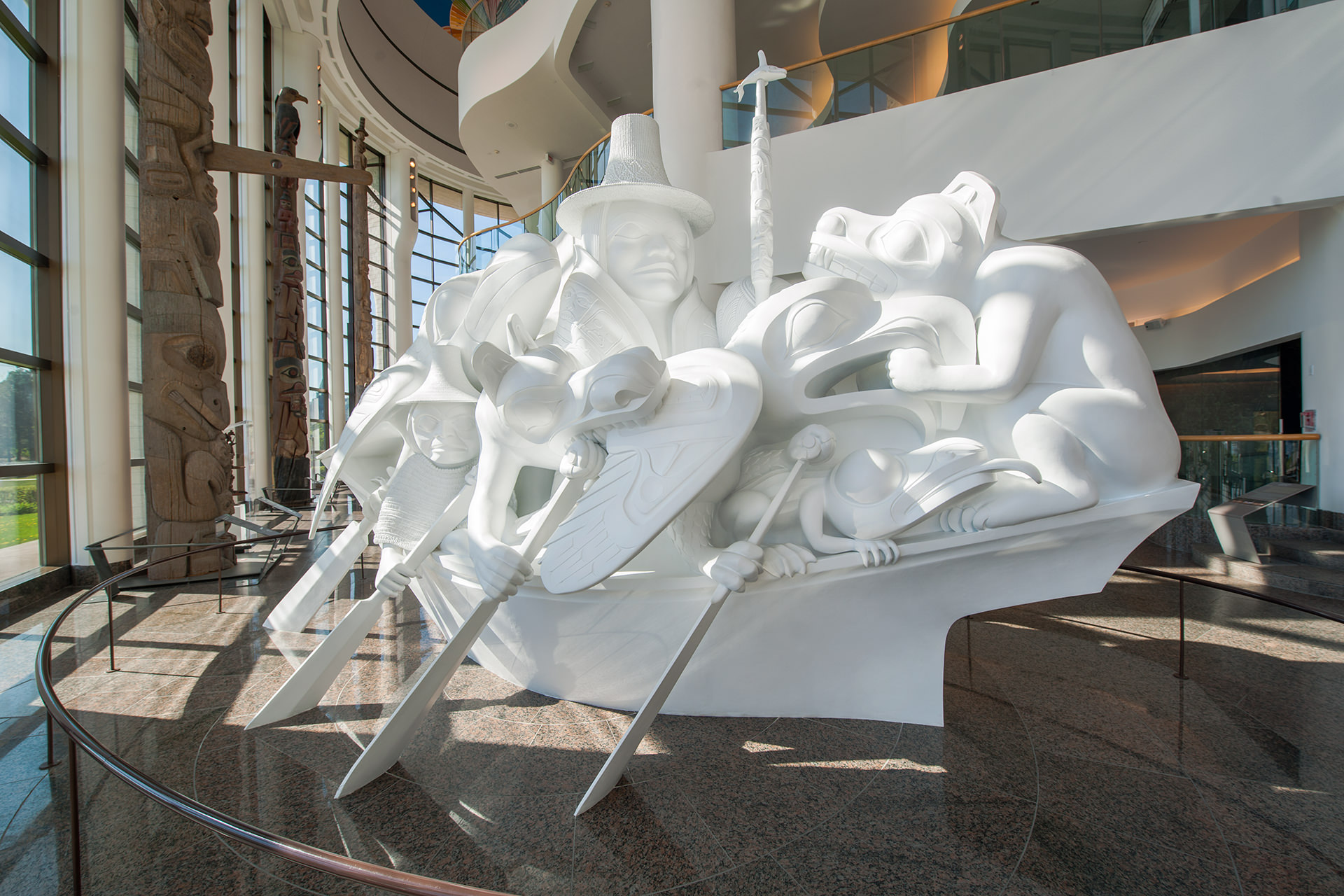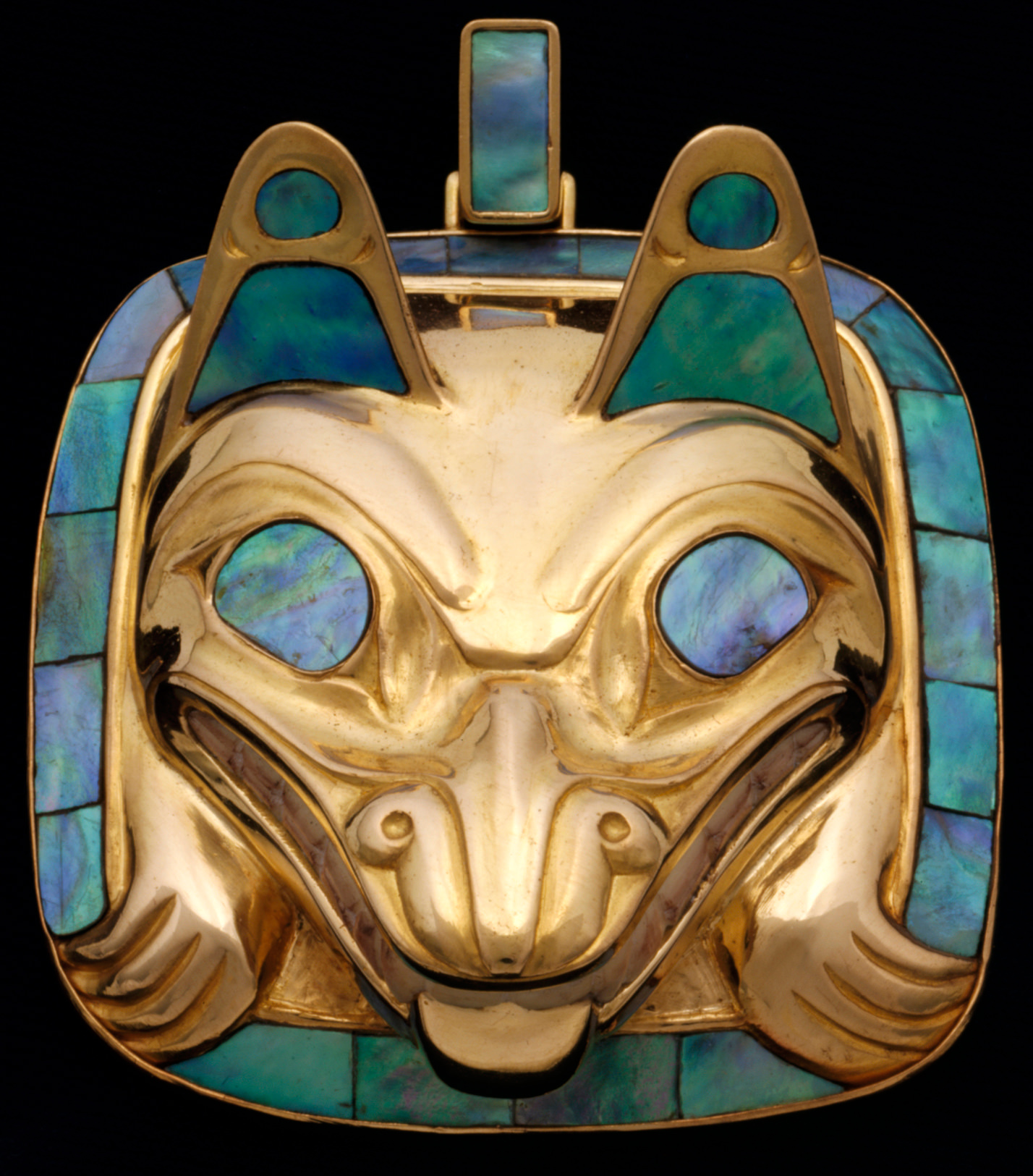

"What sort of an artist is Bill Reid? Sculptor, carver, jeweller, printmaker — all of these, and poet…The major strengths of traditional Northwest Coast art lay in sculpture and oratory. In his sculpture and in his jewellery, Bill has given new forms to the myth and a different expression to the wit."
Harry Hawthorn, Emeritus professor of anthropology, University of British Columbia, Vancouver
Bill Reid, one of Canada's foremost metalsmiths and wood carvers, played an important part in the movement to call attention to the great artistic achievements of Canada's native peoples. Born of Haida and Scottish-German parentage, Reid did not know that he was "anything other than an average Caucasian North American" until he was in his early teens.
In 1943, Reid made the first of what have become annual pilgrimages to the Haida village of Skidegate in the Queen Charlotte Islands. There he visited with his grandfather, Charles Gladstone, a top-notch boat builder who had been an apprentice of Charles Edenshaw, the great nineteenth-century Haida carver and silversmith.
While working as a broadcaster with the CBC in Toronto in the early 1950s, he studied jewellery-making, eventually combining European jewellery techniques with the Haida art tradition. For the next fifty years Reid embraced many art forms and created over 1500 works.
Reid both celebrated and defended the Haida, using his fame to champion their land claims. When he died in 1998, the Haida took him home, bringing his remains back to his mother’s ancestral village, Tanu, aboard “Lootaas.”
He will be remembered for infusing the Haida traditions with modern ideas and forms of expression, influencing emerging artists, and building lasting bridges between First Nations and other peoples.







